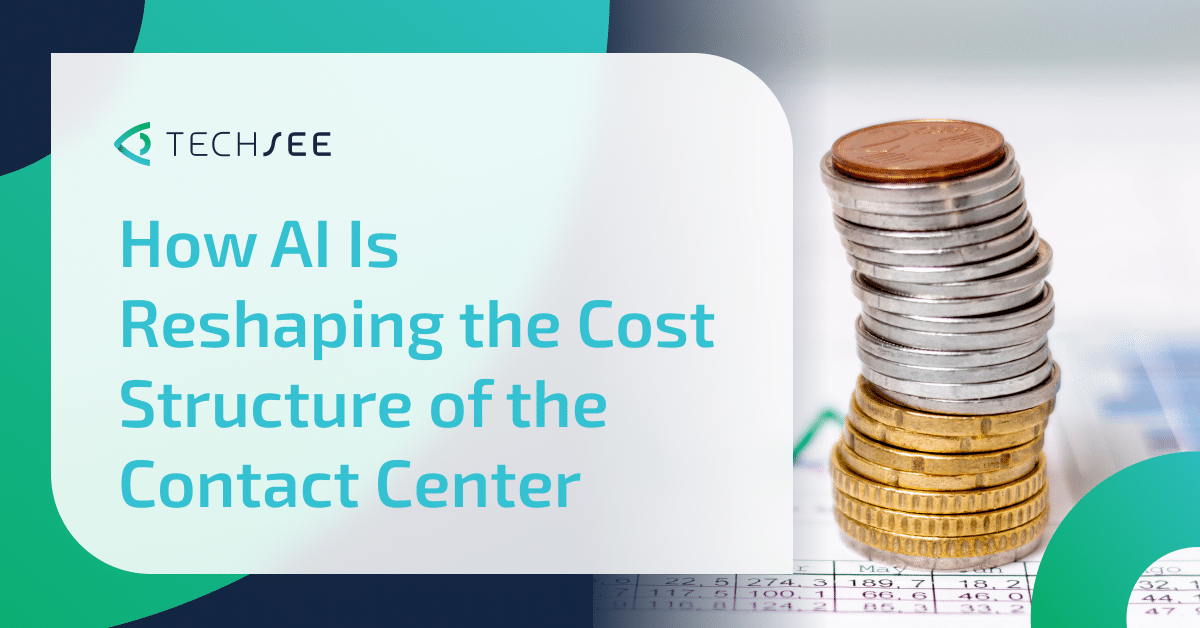Contents
- Understanding the Real Cost of a Contact Center Agent
- Why Cost Reduction Requires Precision
- The Shifting Cost Equation
- From Self-Service to AI-Assisted Agents
- Measuring ROI with Real Benchmarks
- Cost Efficiency as a Design Discipline
- Frequently Asked Questions
- What is the average cost of a call center agent?
- How does AI reduce call center costs?
- What is the best strategy for customer call center cost reduction?
- Can AI technology handle complex customer service tasks?
- How should ROI from automation be evaluated?
- How does AI affect agent training and onboarding?
- What risks come with automating customer interactions?
- How can AI help reduce waiting times for customers?
Customer service leaders often ask what the real cost of a contact center agent is. The answer reaches far beyond salary. It includes training, technology, workspace, management overhead, and the cost of inefficiencies that accumulate through manual work.
Personnel costs account for around 65% of total customer service spending. This makes cost efficiency the number one priority for service leaders looking to modernize operations. The goal is not to reduce people but to create the right balance between human expertise and intelligent automation.
Understanding the Real Cost of a Contact Center Agent
The full cost of an agent includes direct compensation, benefits, employer taxes, training, call center software licenses, and a share of facilities and management overhead. Combined, these create what is often called the fully loaded call center cost per agent.
Across the industry, the cost averages about $53,000 per year. In larger contact centers with hundreds of agents, small gains in efficiency can lead to major savings. A 5% improvement in productivity, for example, can save more than $1 million per year in a 500-seat operation.
Understanding the entire cost structure helps informed decision-makers avoid short-term cuts that hurt long-term performance. Efficiency must be measured by the cost per resolved interaction, not simply by headcount reduction.
Why Cost Reduction Requires Precision
Automation remains one of the most effective call center cost reduction strategies, but it must be applied selectively. It’s because the best results are achieved by identifying which interactions are suitable for automation based on their complexity and business importance.
Routine interactions such as password resets, status checks, and account updates are often ideal candidates. More complex or sensitive cases, like billing disputes or service complaints, still require human handling. A targeted approach allows AI to do what it does best while agents focus on interactions that need empathy, trust, and discretion.
The Shifting Cost Equation
Generative AI and Agentic AI have significantly expanded what can be automated. These technologies can now understand intent, reason across multiple steps, and perform actions autonomously. AI call center automation no longer stops at FAQs; it extends into problem-solving and multi-turn reasoning.
Gartner projects that automation will contain about 25% of customer service interactions by 2027 and 40% by 2029. It also predicts that AI will autonomously resolve 80% of common customer service issues by 2029. This evolution could lead to hundreds of billions of dollars in cost savings across the global service industry.
However, these figures only represent part of the picture. Automation containment does not mean full automation. Many processes will still require human oversight, especially where accuracy, regulation, or customer experience are involved. The most successful organizations focus not on replacing people but on integrating AI to work smarter and more effectively.
From Self-Service to AI-Assisted Agents
Early AI initiatives focused on automating simple and repetitive issues through self-service, such as password resets or account activations. The next phase centers on handling more complex tasks, by by maturing AI assistance for service representatives.
Common AI-powered assist tools can retrieve knowledge, summarize previous interactions, and suggest next steps in real time. However, most still operate without full visibility into the customer’s context. The next generation of agent assist tools is becoming multimodal, able to process not only text and voice but also visual data. These systems can see the customer’s issue, identify the problem, and recommend resolutions more accurately.
As multimodal AI capabilities mature, assistive tools will transition from reactive to proactive. It will enable agents to prevent human errors, reduce average handling time (AHT), and increase first-time resolution rates. This represents a new balance in customer service, humans focused on complex reasoning and empathy, supported by AI that provides speed and insight.
Measuring ROI with Real Benchmarks
A data-driven approach is essential to justify automation investments. In a 500-seat contact center, a 5% reduction in agent workload can save around $1.3 million annually. Expanding automation to half of routine interactions can deliver nearly $13 million in yearly savings.
Still, ROI must be evaluated through a wider lens. Narrowly measuring success by agent reduction can create blind spots. For instance, a contact center that reduces its workforce by 20% may later experience a 10% increase in truck rolls, at a cost of roughly $200 per visit.
The additional field service costs could erase the savings and even generate new losses. Contact center efficiency should never be measured in isolation. True ROI considers the entire operational ecosystem, including call deflection rates, field operations, repeat service visits, and continuously improving and enhancing customer satisfaction. Sustainable savings come from balancing automation and human performance, not from cutting one at the expense of the other.
Cost Efficiency as a Design Discipline
Delivering long-term efficiency requires a structured design approach. Every workflow should be mapped, and every process evaluated for automation readiness. Plus, clear rules should be established for escalation to human agents. Data hygiene and ongoing calibration are crucial for maintaining accuracy.
As AI evolves, the goal should shift from automating individual tasks to orchestrating complete workflows where AI and humans work in tandem. The organizations that treat automation as a continuous learning process, rather than a one-time project, are the ones that achieve durable results.
Frequently Asked Questions
What is the average cost of a call center agent?
The average fully loaded cost per agent is typically between $50,000 and $60,000 per year. This figure includes salary, benefits, technology, and workspace expenses, making even small efficiency improvements financially significant.
How does AI reduce call center costs?
AI reduces costs by handling repetitive, low-complexity tasks and assisting agents with relevant customer data and recommendations. This lowers handling time, minimizes errors, and allows teams to focus on higher-value interactions that impact customer satisfaction.
What is the best strategy for customer call center cost reduction?
The most effective strategy combines selective automation with continuous performance measurement. It focuses on automating predictable processes while maintaining human control over sensitive and judgment-driven cases to ensure quality.
Can AI technology handle complex customer service tasks?
New systems using multimodal AI and generative AI in customer service can interpret text, speech, and images simultaneously. This allows them to diagnose technical issues, understand customer context, and guide agents toward faster, more accurate resolutions.
How should ROI from automation be evaluated?
Automation ROI should be measured across the entire service ecosystem, not just agent reduction. Reducing labor without considering related operational costs, such as truck rolls or repeat visits, can lead to misleading results and potential financial losses. Focusing on overall contact center efficiency ensures sustainable value.
How does AI affect agent training and onboarding?
AI reduces training time by providing real-time guidance and knowledge retrieval. Instead of memorizing scripts, new agents can rely on AI assist tools that surface accurate answers instantly. This speeds up onboarding and improving confidence.
What risks come with automating customer interactions?
Automation can backfire if it’s applied to complex or emotional issues where empathy is key. Poorly trained AI can frustrate customers or create compliance risks. So it’s essential to set clear escalation paths to human agents.
How can AI help reduce waiting times for customers?
AI can handle routine queries instantly and assist agents with relevant information in real time. This speeds up responses, shortens queues, and ensures customers spend less time waiting for support.






